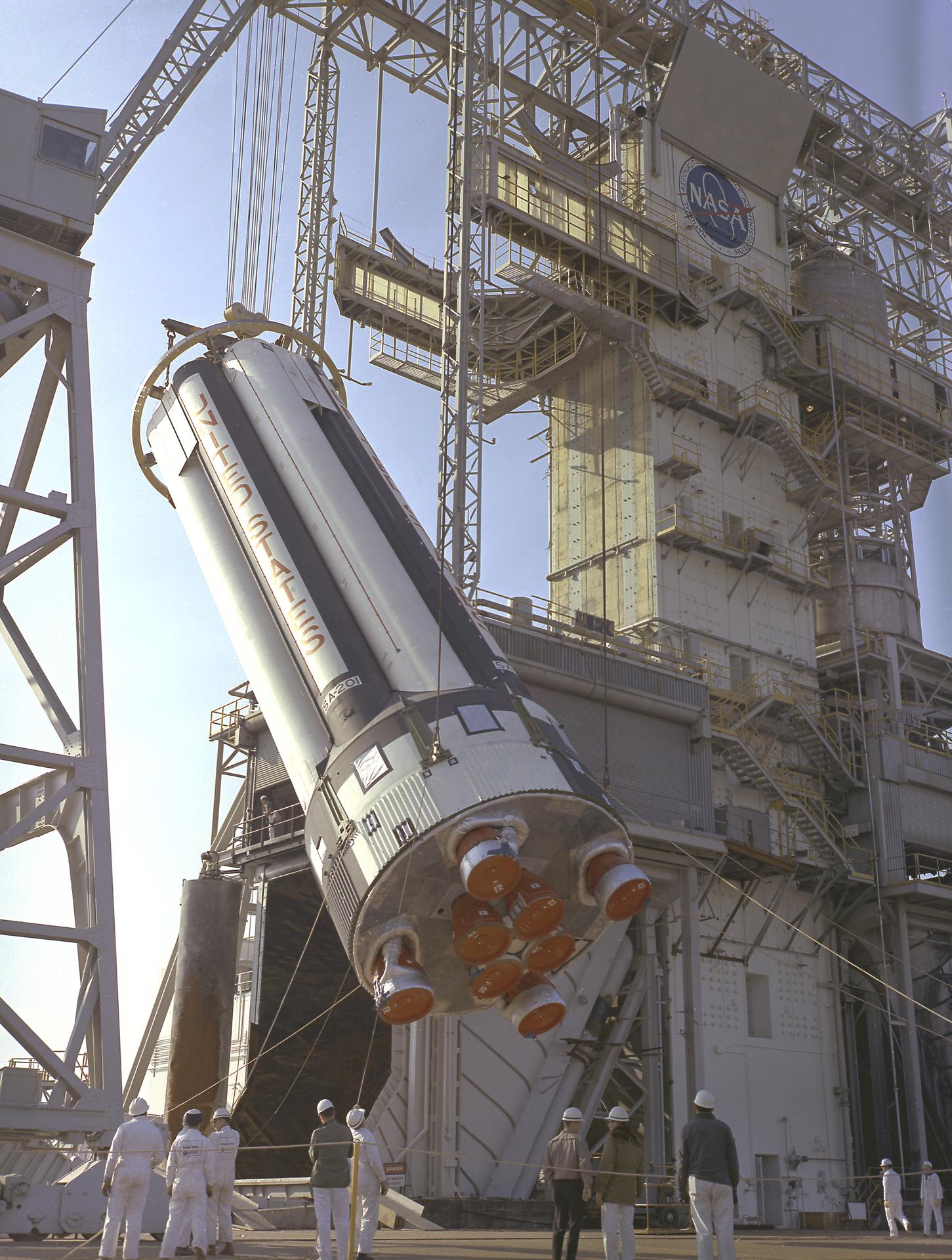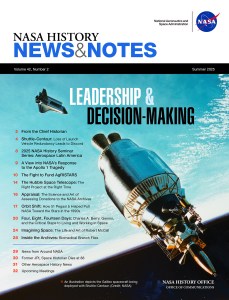In January 1986, NASA’s Voyager 2 became the first, and so far the only, spacecraft to explore Uranus, the second to last stop on its journey through the outer solar system. NASA’s Jet Propulsion Laboratory in Pasadena, California, manages Voyagers 1 and 2, twin spacecraft launched in 1977 to explore the outer planets. Initially planned to fly by Jupiter and Saturn only, Voyager 2 took advantage of a rare planetary alignment that occurs once every 175 years to complete two additional encounters in the outer solar system. Following Voyager 1’s successful exploration of Saturn and Titan in November 1980, on Jan. 8, 1981, NASA approved Voyager 2 to maintain a trajectory that, following its encounter with Saturn in August 1981, would then take it past Uranus in 1986, and if the spacecraft was still functioning, fly by Neptune in 1989.
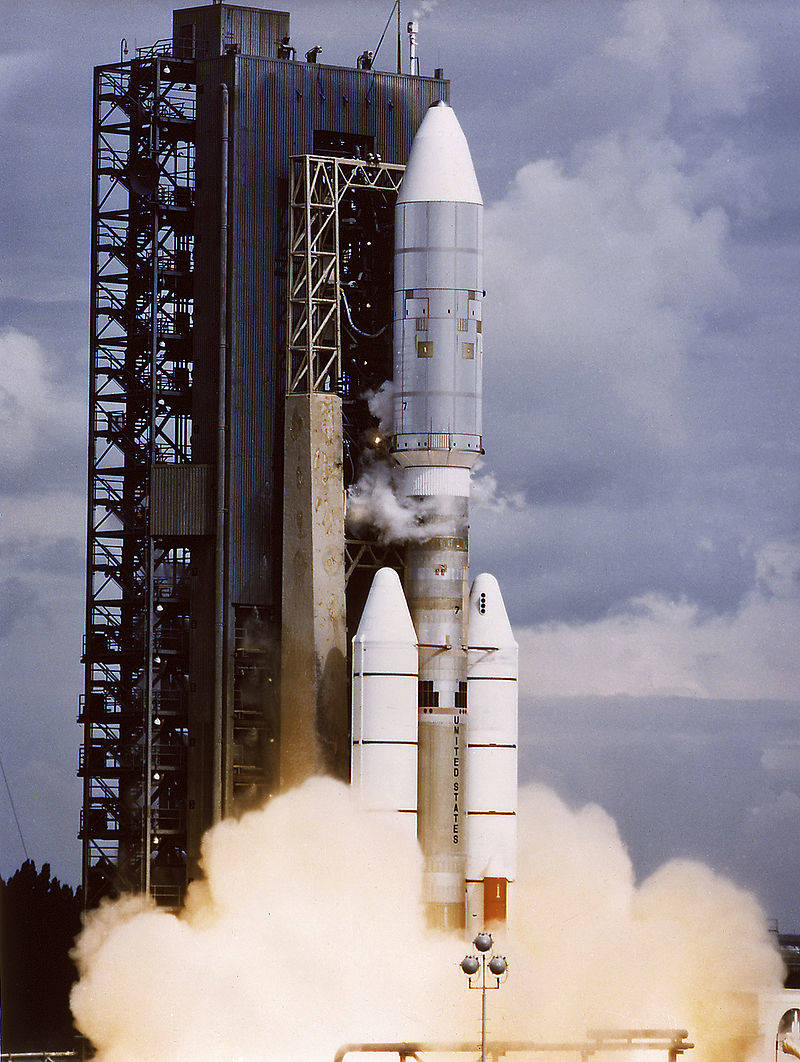
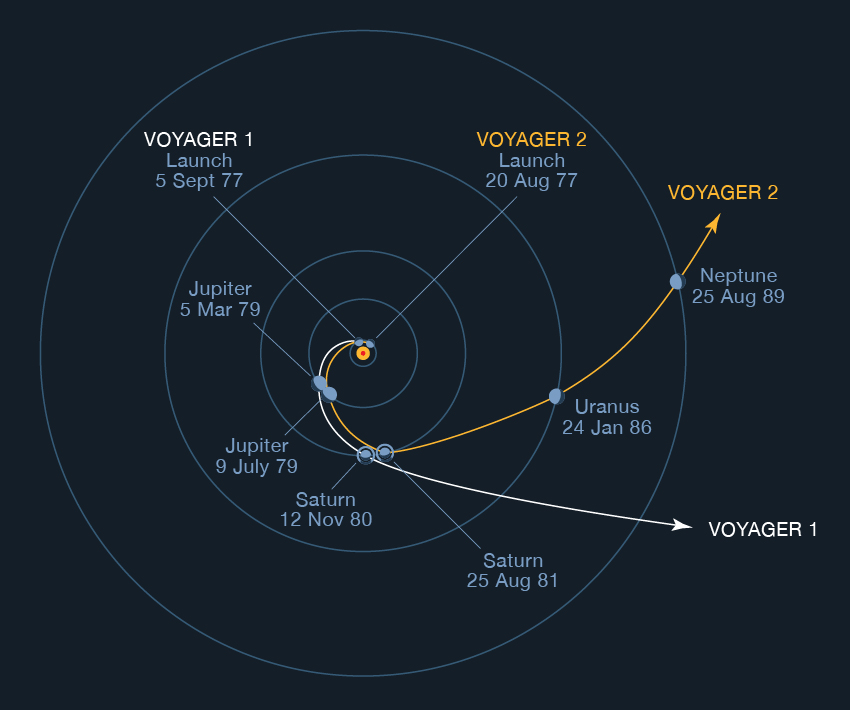
Left: The launch of Voyager 2 in 1977. Right: The trajectories of Voyager 1 and 2 through the outer solar system.
Each Voyager spacecraft carried a suite of 11 instruments, including:
- an imaging science system consisting of narrow-angle and wide-angle cameras to photograph the planet and its satellites.
- a radio science system to determine the planet’s physical properties.
- an infrared interferometer spectrometer to investigate local and global energy balance and atmospheric composition.
- an ultraviolet spectrometer to measure atmospheric properties.
- a magnetometer to analyze the planet’s magnetic field and interaction with the solar wind.
- a plasma spectrometer to investigate microscopic properties of plasma ions.
- a low energy charged particle device to measure fluxes and distributions of ions.
- a cosmic ray detection system to determine the origin and behavior of cosmic radiation.
- a planetary radio astronomy investigation to study radio emissions from Jupiter.
- a photopolarimeter to measure the planet’s surface composition.
- a plasma wave system to study the planet’s magnetosphere.
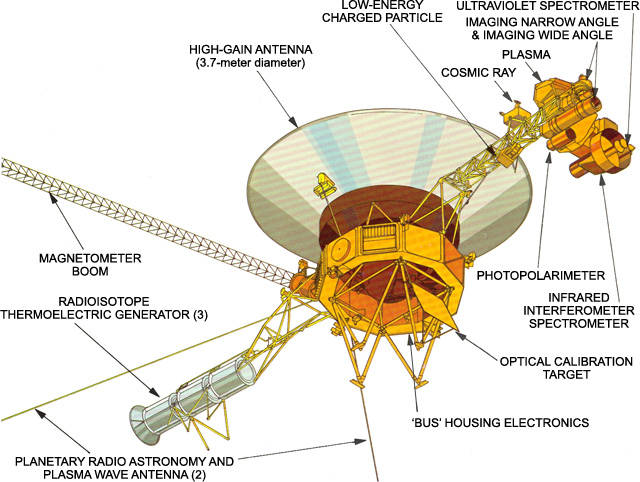
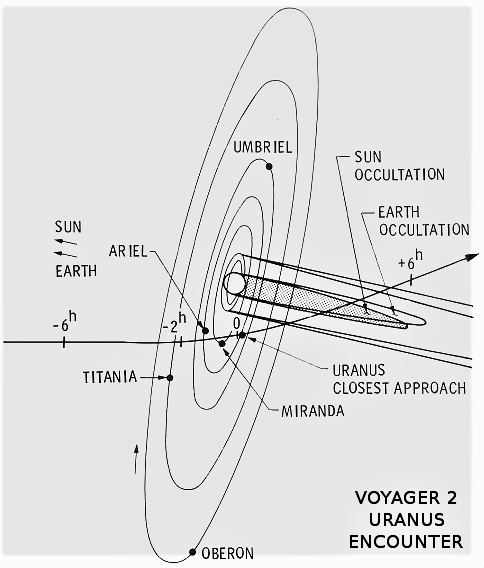
Left: Illustration of the Voyager spacecraft depicting its science instruments. Right: Trajectory of Voyager 2 through the Uranian system.
At the time of the Voyager encounter, Uranus had five known moons and a set of dark rings first observed the year the spacecraft left Earth. Astronomers had named the moons, in order of distance from the planet, Miranda, Ariel, Umbriel, Titania, and Oberon, after characters in works by William Shakespeare and Alexander Pope. Because of Uranus’ great distance from the Sun, engineers made changes to Voyager’s imaging techniques to accommodate light levels only 25% of what they were during the Saturn encounter. Engineers programmed image motion compensation techniques into Voyager’s computer to maintain clear photographs at the required 15-second exposure times coupled with the spacecraft’s velocity. NASA also upgraded the ground-based tracking antennas of the Deep Space Network to increase their sensitivity to receive Voyager’s signals from Uranus’ distance.
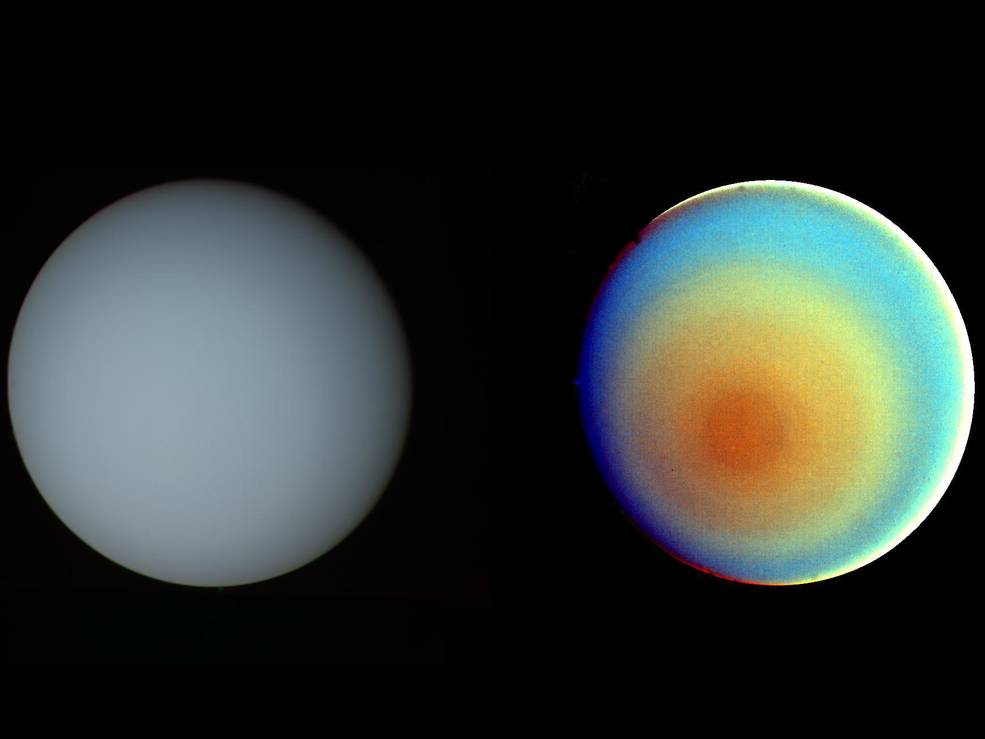
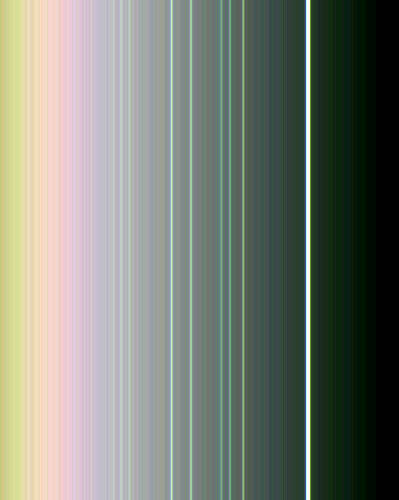
Left: Voyager 2 images of Uranus in natural color, left, and false-color to highlight atmospheric features on an otherwise rather bland looking planet, taken from 5.7 million miles away. Right: False color Voyager 2 image of Uranus’ rings to bring out details, taken from 6 million miles away.
Voyager 2 began to observe Uranus on November 4, 1985, by creating a series of time-lapse videos of the planet and its surroundings. Due to Uranus’ axial tilt of nearly 98 degrees to its orbital plane (the planet is basically lying on its side), Voyager 2’s encounter resembled aiming at a bull’s eye, with the planet at the center and its moons and rings orbiting around it. Due to this unusual orientation, the Sun illuminated only the southern hemispheres of the planet and its moons. It also required Voyager 2 to complete its close encounter observations in just a few hours, compared with several days for the Jupiter and Saturn flybys. On Dec. 30, Voyager 2 discovered its first new moon, eventually named Puck, orbiting closer to Uranus than Miranda. Engineers at JPL resolved an issue with the spacecraft’s imaging system that resulted in highly streaked photographs just three days before the closest encounter.
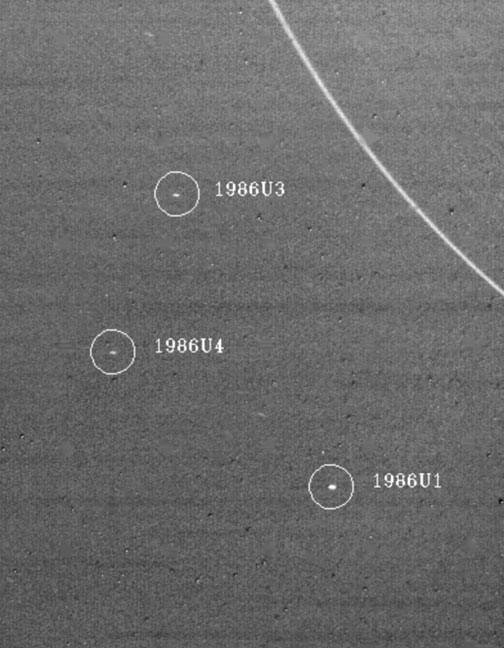
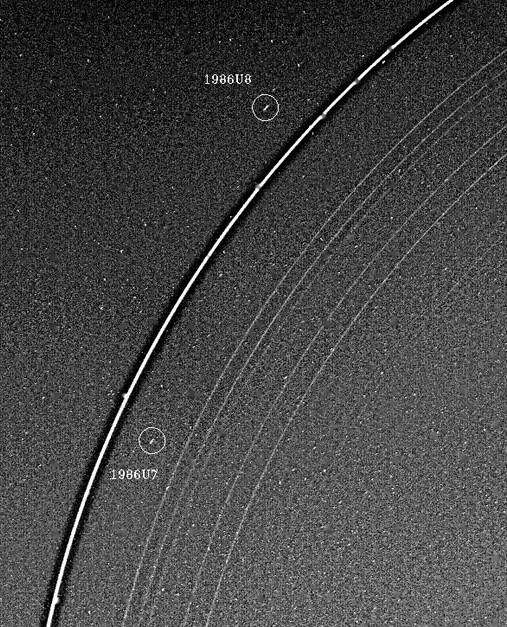
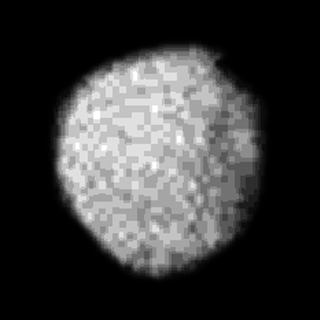
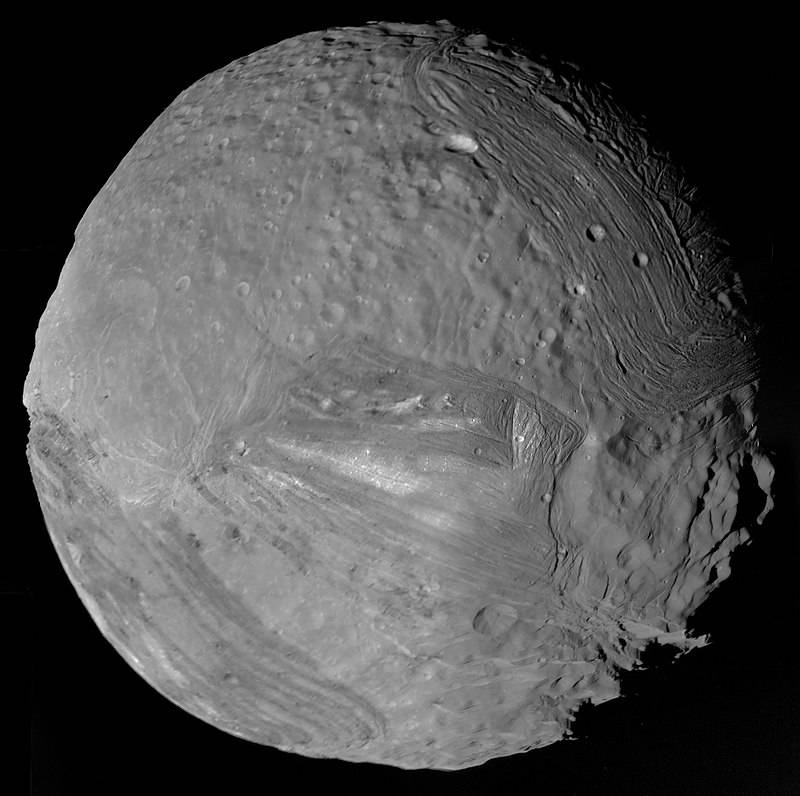
Left: Voyager 2 image of three undiscovered moons orbiting Uranus, taken from 4.8 million miles away. Middle left: Two more undiscovered moons, imaged from 2.5 million miles away. Middle right: Image of the newly discovered moon Puck (1986U1), from 493,000 miles away. Right: Composite image of Miranda, showing its fractured surface. The sizes of the moons are not to scale.
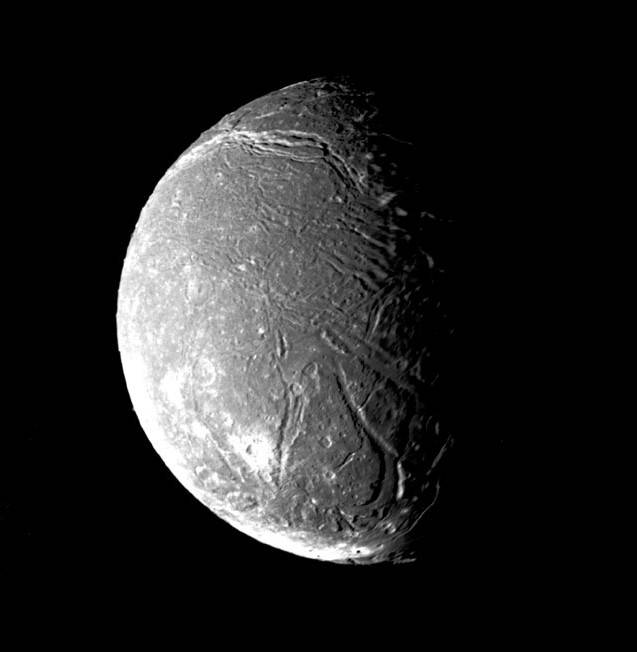
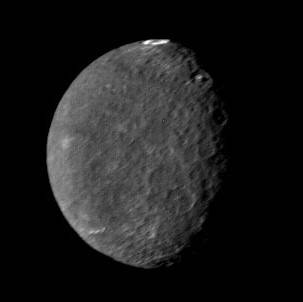

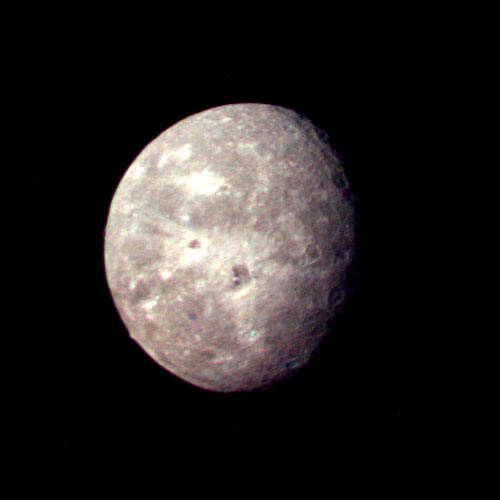
Left: Voyager 2 image of Uranus’ moon Ariel, taken from 80,000 miles away. Middle left: Umbriel, from 346,000 miles away. Middle right: Titania, from 229,000 miles away. Right: Oberon, from 410,000 miles away. The sizes of the moons are not to scale.
On Jan. 24, 1986, about 11 hours before its closest approach to Uranus, Voyager 2 entered the planet’s magnetosphere. The spacecraft’s instruments revealed that Uranus’ magnetic field dipole was tilted by 59 degrees compared to its rotational axis and offset from the planet’s center by about one-third of the planet’s radius, unlike any previously observed planetary magnetic field. As Voyager 2 continued to approach Uranus, it imaged the planet’s large satellites, passing just 18,000 miles from Miranda, the closest encounter Voyager 2 had made with any celestial body to that point. The images returned revealed each moon to be unique and showed more geologic activity than expected. Voyager 2 then made its closest approach of 50,700 miles above the Uranian cloud tops, passing behind the planet so its radio signals could provide information about its upper atmosphere. As it traveled away from Uranus, Voyager returned images of the planet and its rings backlit by the Sun, concluding the encounter phase on Feb. 25, 1986. In all, the spacecraft returned more than 7,000 photographs, revealing 11 new moons, the innermost ones being intricately involved with the ring system, and two new rings orbiting the planet, and a wealth of information for scientists to analyze for years to come. In March 2020, scientists at NASA’s Goddard Space Flight Center in Greenbelt, Maryland, published a reanalysis of data from the Voyager 2 Uranus flyby, finding that a giant magnetic bubble known as a plasmoid may have been slowly whisking the planet’s atmosphere out to space.
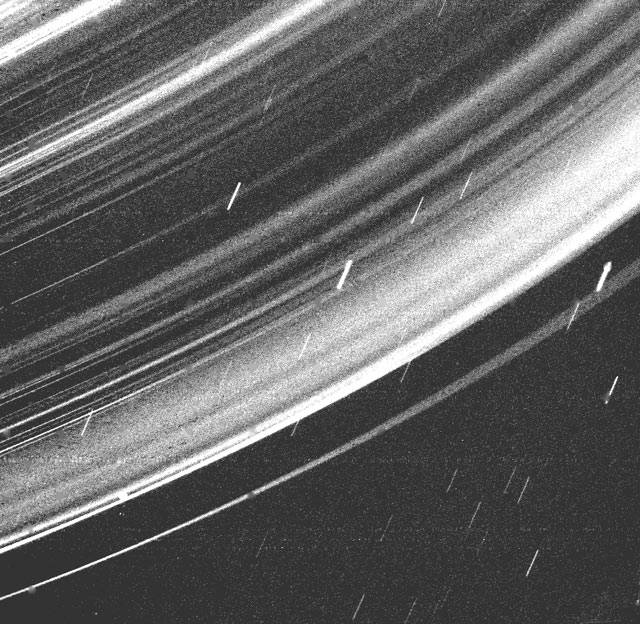
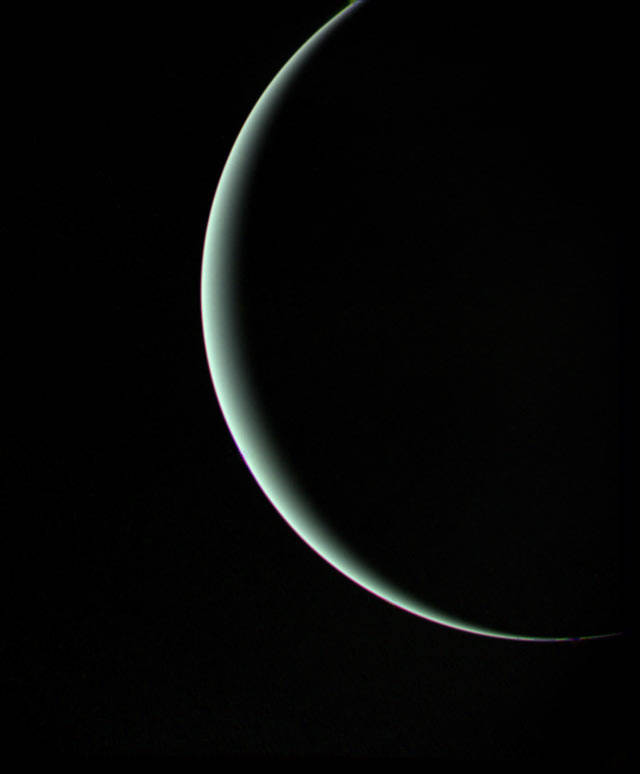
Left: Image of Uranus’ rings, backlit by the Sun. Right: Parting shot of Uranus, seen as a crescent backlit by the Sun, taken the day after closest encounter from a distance of 600,000 miles.
The gravity assist from Uranus sent Voyager 2 on towards Neptune, a planet the spacecraft explored in 1989. Following its reconnaissance of Neptune, Voyager 2 began its Interstellar Mission extension that continues to this day, more than 44 years after the hardy craft left Earth. Over the years, engineers turned off several of Voyager 2’s instruments to conserve power, beginning with the imaging system in 1989, but the spacecraft continues to return data about cosmic rays and the solar wind to this day. On Nov. 5, 2018, six years after its twin, Voyager 2 crossed the heliopause, which is the boundary between the heliosphere – the bubble-like region of space created by the Sun – and the interstellar medium. It is expected that Voyager 2 will continue to return data from interstellar space until about 2025. And just in case it may one day be found by an alien intelligence, Voyager 2 and its twin carry a gold plated record that contains information about its home planet, including recordings of terrestrial sounds, music and greetings in 55 languages. Instructions on how to play the record are also included.
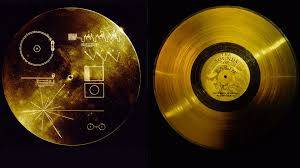
The gold disc carried by each Voyager spacecraft.




























